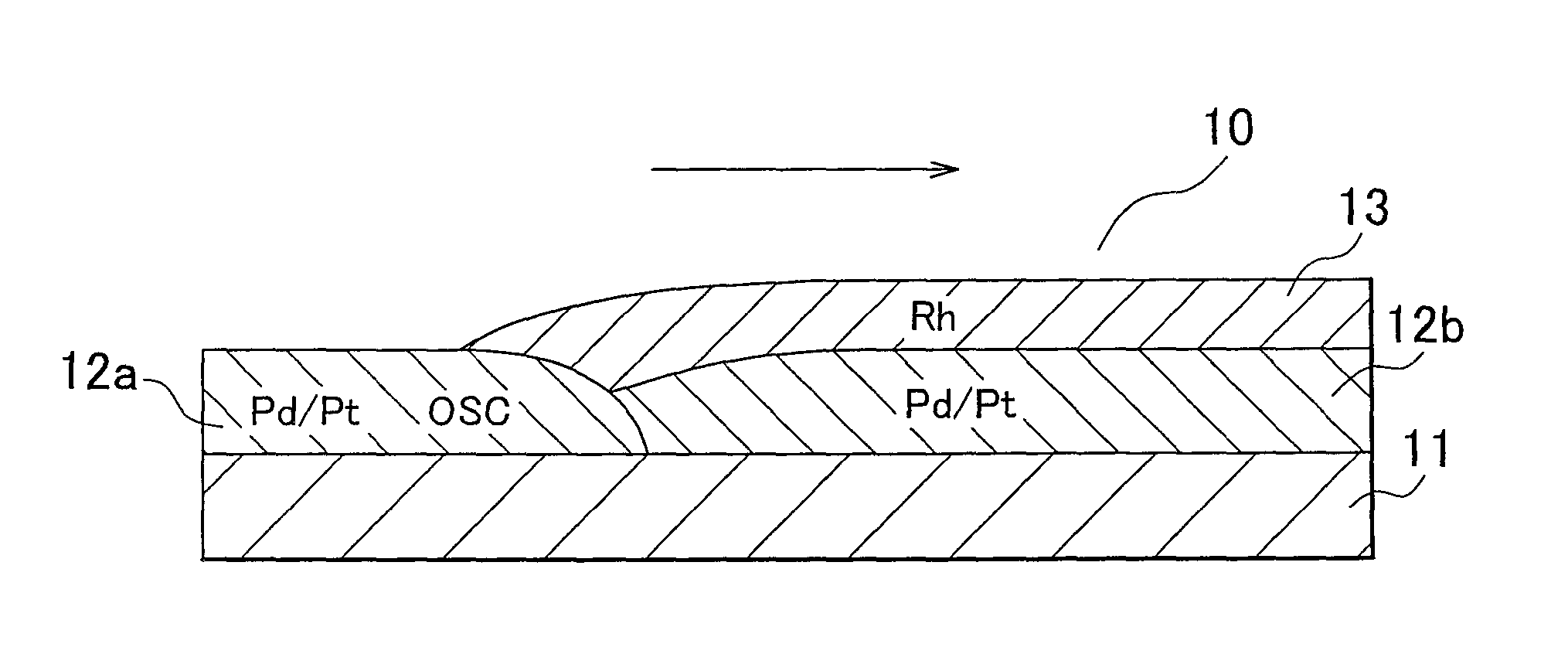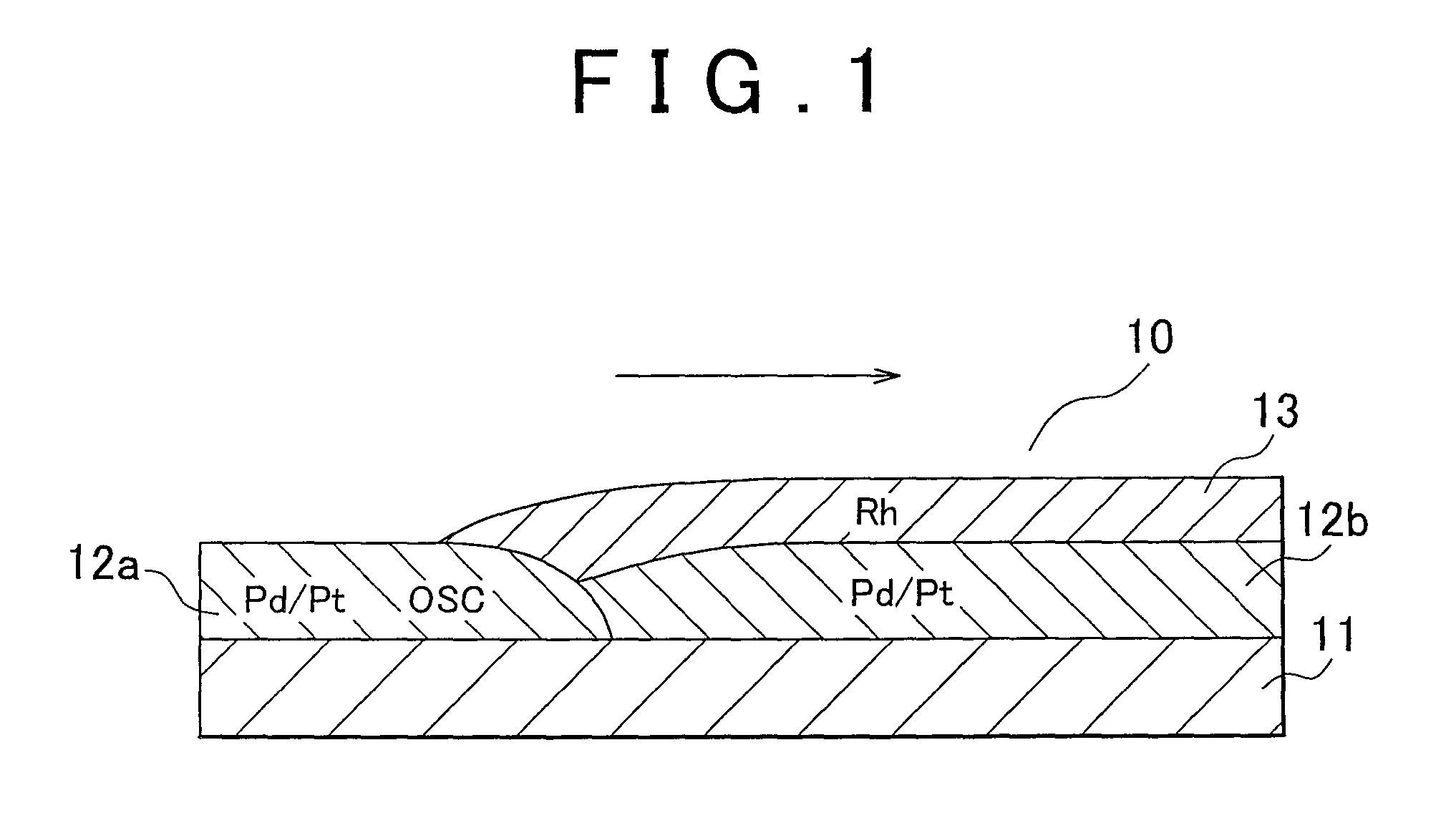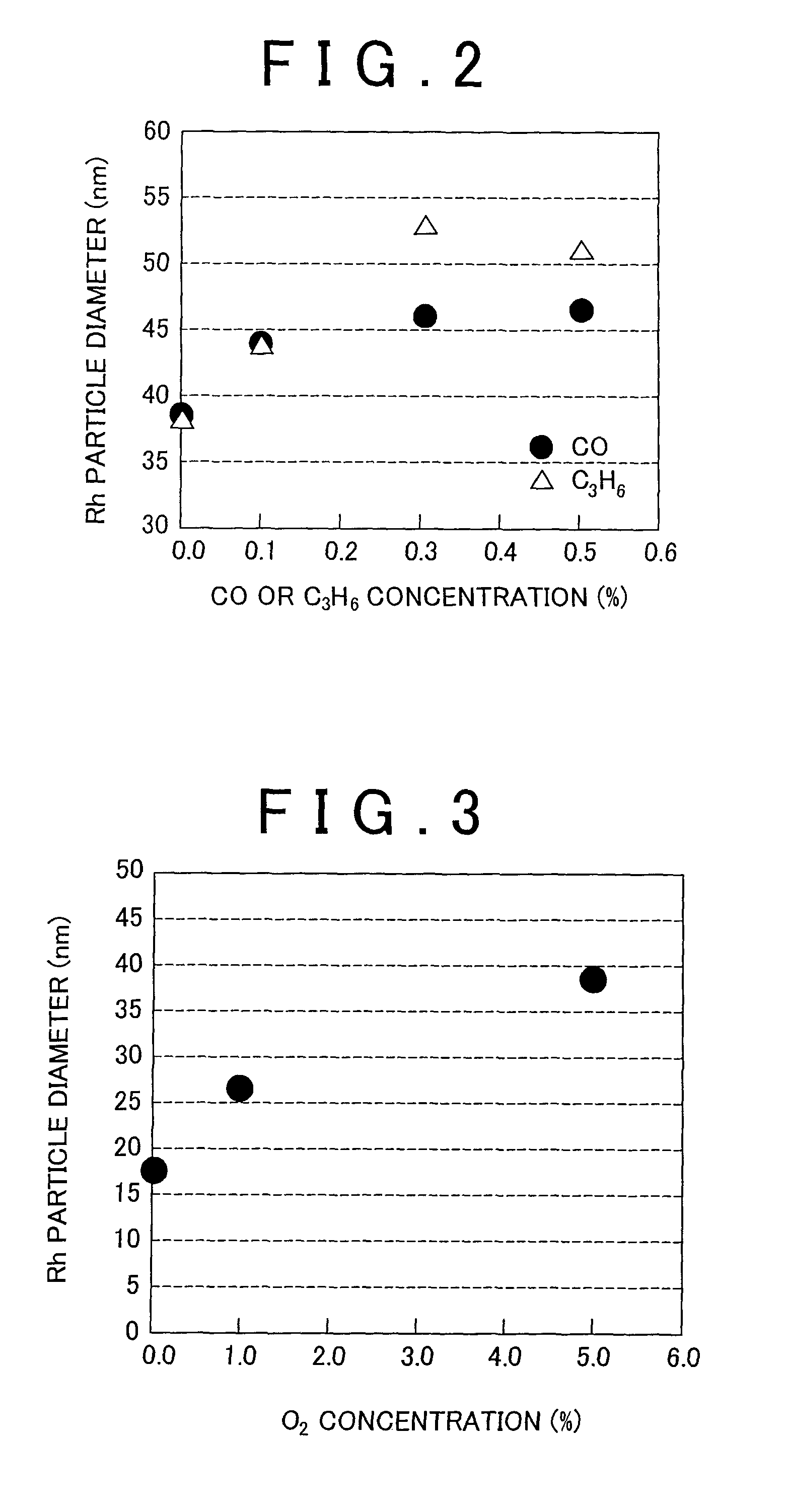Double layered exhaust gas purification catalyst
a purification catalyst and exhaust gas technology, applied in the field of exhaust gas purification catalysts, can solve the problems of undergone particle growth, sintering, and inability to maintain high purification performance with just a three-way catalyst, and achieve high purification performance and catalyst warm-up performance.
- Summary
- Abstract
- Description
- Claims
- Application Information
AI Technical Summary
Benefits of technology
Problems solved by technology
Method used
Image
Examples
example 1
[0063][Formation of the Front-Stage Lower Catalyst Layer]
[0064]Using a palladium nitrate solution, Pd (1.0 g / substrate-L (per 1 L of substrate)) was supported by impregnation on 35 g / substrate-L of a ZrO2 composite oxide powder (ZrO2: 68 wt %, La2O3: 7 wt %, Y2O3: 25 wt %). This Pd-loaded ZrO2 composite oxide powder was then mixed with 77 g / substrate-L La-doped Al2O3 (Al2O3: 96 wt %, La2O3: 4 wt %), 35 g / substrate-L tetragonal CeO2—ZrO2 composite oxide (CeO2 / ZrO2=1.43 (molar ratio)) as an Oxygen storage material, and 5 g / substrate-L Al2O3 binder, and a coating slurry was prepared by the addition of water. The obtained slurry was then coated by a washcoat method on the exhaust gas upstream portion of a ceramic honeycomb substrate (φ103 mm, L105 mm, volume 875 cc) having a large number of wall-partitioned cells; coating was performed over a distance of 35% with respect to the total length of the honeycomb substrate. This was followed by drying and firing to form the front-stage lower ...
example 2
[0074]An exhaust gas purification catalyst B was obtained proceeding as in Example 1, but using a tetragonal CeO2—ZrO2 composite oxide with CeO2 / ZrO2=0.35 (molar ratio) as the oxygen storage material in the front-stage lower catalyst layer.
example 3
[0075]An exhaust gas purification catalyst C was obtained proceeding as in Example 1, but using a tetragonal CeO—ZrO2 composite oxide with CeO2 / ZrO2=0.49 (molar ratio) as the oxygen storage material in the front-stage lower catalyst layer.
PUM
| Property | Measurement | Unit |
|---|---|---|
| temperature | aaaaa | aaaaa |
| temperature | aaaaa | aaaaa |
| volume | aaaaa | aaaaa |
Abstract
Description
Claims
Application Information
 Login to View More
Login to View More - R&D
- Intellectual Property
- Life Sciences
- Materials
- Tech Scout
- Unparalleled Data Quality
- Higher Quality Content
- 60% Fewer Hallucinations
Browse by: Latest US Patents, China's latest patents, Technical Efficacy Thesaurus, Application Domain, Technology Topic, Popular Technical Reports.
© 2025 PatSnap. All rights reserved.Legal|Privacy policy|Modern Slavery Act Transparency Statement|Sitemap|About US| Contact US: help@patsnap.com



